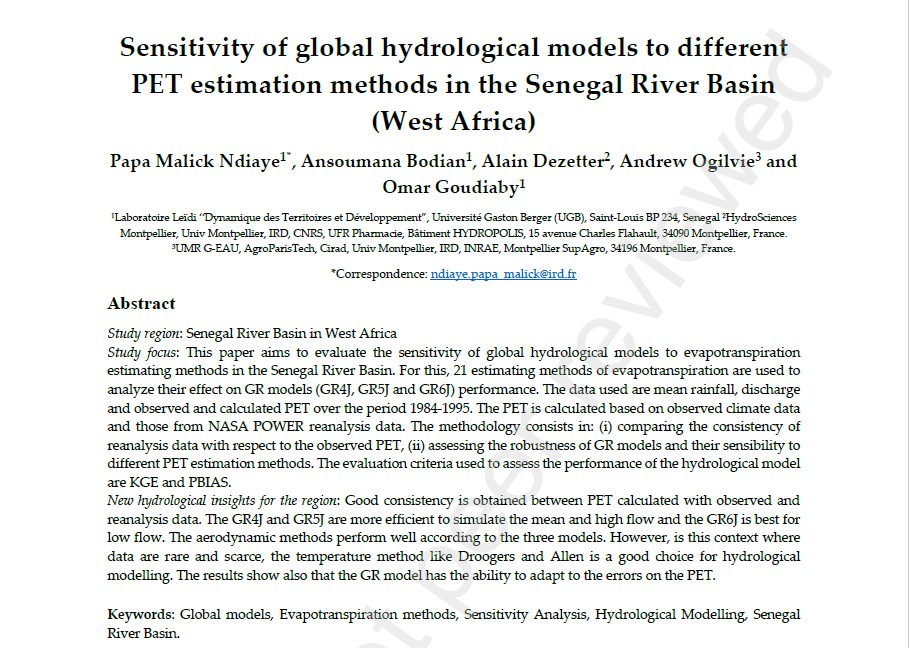ABSTRACT
Study region: Senegal River Basin in West Africa
Study focus: This paper aims to evaluate the sensitivity of global hydrological models to evapotranspiration estimating methods in the Senegal River Basin. For this, 21 estimating methods of evapotranspiration are used to analyze their effect on GR models (GR4J, GR5J and GR6J) performance. The data used are mean rainfall, discharge and observed and calculated PET over the period 1984-1995. The PET is calculated based on observed climate data and those from NASA POWER reanalysis data. The methodology consists in: (i) comparing the consistency of reanalysis data with respect to the observed PET, (ii) assessing the robustness of GR models and their sensibility to different PET estimation methods. The evaluation criteria used to assess the performance of the hydrological model are KGE and PBIAS. New hydrological insights for the region: Good consistency is obtained between PET calculated with observed and reanalysis data. The GR4J and GR5J are more efficient to simulate the mean and high flow and the GR6J is best for low flow. The aerodynamic methods perform well according to the three models. However, is this context where data are rare and scarce, the temperature method like Droogers and Allen is a good choice for hydrological modelling. The results show also that the GR model has the ability to adapt to the errors on the PET.
